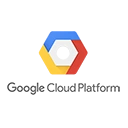Google Cloud IoT Events is a powerful service that allows you to automate actions in response to events generated by IoT devices. In this guide, we'll explore the key concepts and steps to get started with Google Cloud IoT Events, including a sample code snippet for implementing rule-based automation using IoT Events.
Key Concepts
Before we dive into the code, let's understand some key concepts related to Google Cloud IoT Events:
- Event Sources: IoT Events can receive event data from a variety of sources, including Google Cloud Pub/Sub topics and external HTTP endpoints.
- Rules: Rules in IoT Events define conditions and actions to be taken when specific events occur. You can create rules to trigger actions like sending notifications, invoking Cloud Functions, or updating device states.
- Integrations: IoT Events can integrate with various Google Cloud services, allowing you to build complex workflows and automate tasks seamlessly.
Sample Code: Implementing Rule-Based Automation
Here's a sample code snippet for implementing rule-based automation using Google Cloud IoT Events. To use this code, you need to have a Google Cloud project set up and IoT Events configured:
# Import the necessary libraries
from google.cloud import iot_v1
# Define your project, location, and registry details
project_id = 'your-project-id'
location = 'us-central1'
registry_id = 'your-registry-id'
# Initialize the IoT Events client
client = iot_v1.EventarcClient()
# Define an event filter
filter = 'event.type=="my.custom.event"'
# Define the target action (e.g., invoking a Cloud Function)
target = 'projects/{project_id}/locations/{location}/functions/{cloud-function-name}'.format(
project_id=project_id, location=location, cloud-function-name='your-cloud-function'
)
# Create a new event filter
event_filter = iot_v1.EventFilter(
filter=filter,
target=target
)
# Create the event configuration
event_config = iot_v1.EventConfig(
name='projects/{project_id}/locations/{location}/registries/{registry_id}/eventConfigs/{config_id}'.format(
project_id=project_id, location=location, registry_id=registry_id, config_id='config-id'
),
destination=event_filter
)
# Create the event configuration
client.create_event_config(parent='projects/{project_id}/locations/{location}/registries/{registry_id}'.format(
project_id=project_id, location=location, registry_id=registry_id
), event_config=event_config)
print('Rule-based automation configuration created.')
Replace `'your-project-id'`, `'us-central1'`, `'your-registry-id'`, `'my.custom.event'`, and `'your-cloud-function'` with your specific project, location, registry, event type, and Cloud Function details. This code demonstrates how to configure rule-based automation for specific IoT events.
Conclusion
Google Cloud IoT Events simplifies the automation of actions in response to IoT events, allowing you to build rule-based automation systems. By understanding the key concepts and using the provided code snippet, you can start automating tasks based on IoT events in your IoT solution.

